 Jack Lancaster and Robin Lumley came up with this really exciting project in 1975:
Jack Lancaster and Robin Lumley came up with this really exciting project in 1975:
Peter and the Wolf is an album adapting Sergei Prokofiev’s Peter and the Wolf by Jack Lancaster and Robin Lumley released in 1975.
It features a rock arrangement of Prokofiev’s music. Performers on the album include Jack Lancaster, Robin Lumley, Gary Brooker, Bill Bruford, Phil Collins, Julie Tippett, Stephane Grappelli, Jon Hiseman, Brian Eno, Alvin Lee, Gary Moore, Cozy Powell, Manfred Mann, Keith Tippett, Viv Stanshall, and the English Chorale.
This album is notable for featuring several musicians from Brand X, who would release their debut album the following year. (wikipedia)
Alternate frontcover:

I saw this album a couple decades ago resting on the jazz shelf of a commercial record store, section I don’t usually look at, but something I still don’t know made me take a look, so I stopped to read the credits, I couldn’t believe my eyes, Bill Bruford, Phil Collins, Cozy Powell, Brian Eno, Chris Spedding, Manfred Mann and even the crazy Viv Stanshal in the narrations, without haven’t heard a single note I bought it (This was usual when there was no Internet or MP3), even when it was classified as Jazz, genre that’s not my cup of tea, mostly because it was very cheap being that the only copy had several months in the store.

I was not disappointed despite the fact that I was familiar to Prokofiev’s version and expected something much more closer to the original, what is not exactly the case because even when the structure is very similar to the original being that each musician takes the role of a character, the instruments used are completely different, don’t expect to find oboes as in the original work, but be sure that the instrumentation and even the vocals are perfect for the new version.
Producer Dennis Mackay and Jack Lancaster at Trident Studios in 1975:
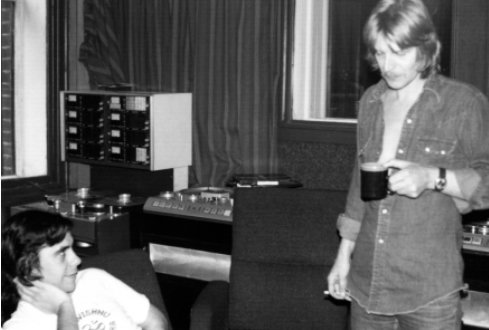
What I can’t assure is if it’s closer to Rock, Prog or Jazz, because all the genres and styles gently blend one with the other as if they were created to be listened together in one work, and everybody will agree that the balance is perfect and the music is outstanding, so it’s worth the price paid for it despite the genre.
I simply love Manfred Mann’s keyboard interpretation of Peter, absolutely jazzy but with a perfect touch of his classic style, Peter’s Theme is one of the strongest tracks of the album, but it’s also important to notice the excellent work done by Gary Moore and Chris Spedding as The Duck plus the excellent track The Hunters with the impeccable drums work.
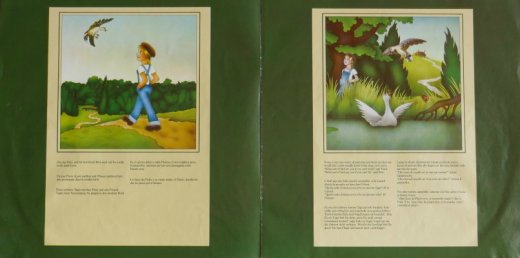
Of course nothing would be the same without the perfect narration by the amazing Viv Stanshal from The Bonzo Dog Doo Dah Band, who gives the credibility required for the role with his perfect accent as if he would left behind his days of craziness and adventures with Keith Moon, but without loosing his sense of humor including burps and satiric phrases.
It’s not easy to write much more about this album, because there are hundreds of small details that must be appreciated by the individual listener and many more that surely I can’t describe with my modest English, but part of the fun is to discover new things each and every time you play the album instead of reading about them.
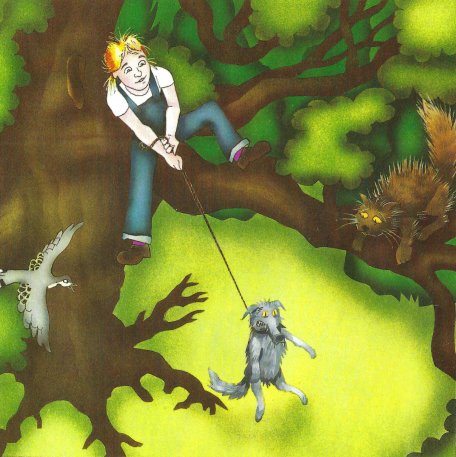
If you got it, take good care because it’s hard to find, but if you don’t, use any available contact and buy it, it’s a must have. (by Ivan_Melgar_M)
A truly remarkable concept album with lots of imaginative and sometimes surprising sounds, recorded by truly renowned British jazz and rock musicians (just read the cast list!).

Personnel:
Gary Brooker (synthesizer bei 02., 03.)
Bill Bruford (drums bei 13.)
Phil Collins (drums bei 02., 05., 06., 08., 10., 11.,13., 14. + 16. percussion on 12., vibraphone bei 02.)
Eno (synthesizer bei 08., 10. + 12.)
Bernie Frost (vocals bei 14.)
John Goodsall (guitar bei 02., 05., 06., 10., 11.
Stephane Grappelli (violin bei 04., 07. + 10.)
Pete Haywood (steel guitar bei 01., 02.)
Jon Hiseman (drums bei 13.)
Percy Jones (bass bei 01., 02., 05., 06., 08., 10., 11. + 16.)
Jack Lancaster (lyricon bei 01.,06., 12. – 14. + 16. saxophone bei 01., 06., 14. + 16., violin bei 10., flute bei 13., clarinet bei 16.)
Alvin Lee (guitar bei 04. + 16.)
Henry Lowther (violin bei 05., trumpet bei 13.)
Robin Lumley (piano bei 01., 02., 06., 08.,10.,12., 14. + 16., synthesizer bei 01., 08., 10., 11.,12., strings bei 02., clarinet bei 05.)
Manfred Mann (synthesizer bei 02.)
Dave Marquee (bass bei 04., 07.
Erika Michailenko (chimes bei 01., 02.)
Gary Moore (guitar bei 01. – 03., 05., 11., 14. – 16.)
Cozy Powell (drums bei 01., 13.)
Andy Pyle (bass bei 02., 14.)
Chris Spedding (guitar bei 08.)
Julie Tippett (vocals bei 01. + 16.)
Keith Tippett (piano bei 02.)
+
English Chorale (vocals bei 09.)
+
background vocals bei 16.:
Bernie Frost – Bob Sargeant – Erika Michailenko
+
Viv Stanshall (narrator)
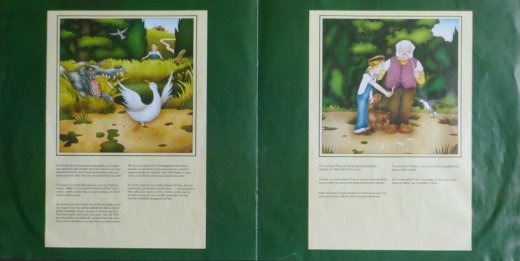
Tracklist:
01. Introduction 1.06
02. Peter’s Theme 2.11
03. Bird And Peter 0.06
04. Duck Theme 1.00
05. Pond 0.47
06. Duck And Bird 2.12
07. Cat Dance 0.30
08. Cat And Duck 1.33
09. Grandfather 3.05
10. Cat 0.35
11. Wolf 0.47
12. Wolf And Duck 3.42
13. Threnody For A Duck 1.52
14. Wolf Stalks 0.58
15. Cat In Tree 2.14
16. Peter’s Chase 1.47
17. Capture Of Wolf 1.28
21. Final Theme 5.09
Music: Sergei Prokofiev – Jack Lancaster – Robin Lumley
Lyrics: unknown

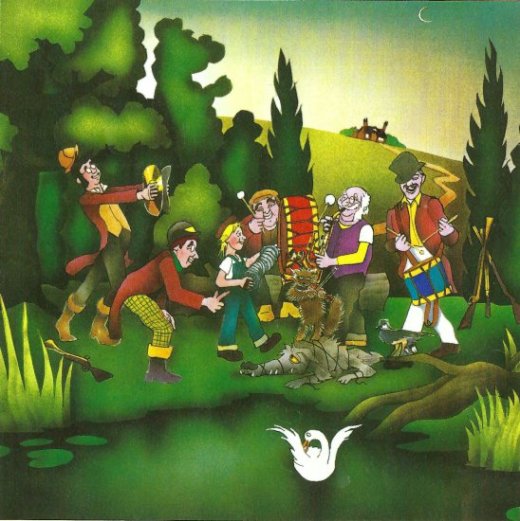


 Peter and the Wolf, Op. 67, a ‘symphonic fairy tale for children’, is a musical composition written by Sergei Prokofiev in 1936. The narrator tells a children’s story, while the orchestra illustrates it. It is Prokofiev’s most frequently performed work, and one of the most frequently performed works in the entire classical repertoire. It has been recorded many times.
Peter and the Wolf, Op. 67, a ‘symphonic fairy tale for children’, is a musical composition written by Sergei Prokofiev in 1936. The narrator tells a children’s story, while the orchestra illustrates it. It is Prokofiev’s most frequently performed work, and one of the most frequently performed works in the entire classical repertoire. It has been recorded many times.

 Peter fetches a rope and climbs over the garden wall into the tree. He asks the bird to fly around the wolf’s head to distract it, while he lowers a noose and catches the wolf by its tail. The wolf struggles to get free, but Peter ties the rope to the tree and the noose only gets tighter.
Peter fetches a rope and climbs over the garden wall into the tree. He asks the bird to fly around the wolf’s head to distract it, while he lowers a noose and catches the wolf by its tail. The wolf struggles to get free, but Peter ties the rope to the tree and the noose only gets tighter.

